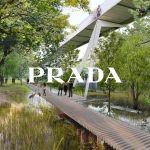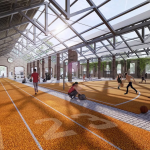
Milan is going to have its own High Line park soon
An elevated park that will rise in the next few years near Fondazione Prada
April 1st, 2021
Since Expo 2015, Milan's urban redevelopment plans have not stopped and, in view of the upcoming Olympics, have indeed increased. Among these there was also the Scalo Porta Romana, with its twenty hectares of unused space in the Lodi area that was sold last autumn to the urban company Coima S.G.R, consisting of various companies and investors but above all Prada Holding, the group controlled by Patrizio Bertelli and Miuccia Prada. Yesterday the final project for the redevelopment of the area signed by a team of architectural firms composed of Outcomist, Diller Scofidio + Renfro, PLP Architecture and Carlo Ratti Associati was finally presented, which will host a huge park, including an Italian version of New York's Highline Park, offices and an Olympic village that, after Cortina 2026, will be converted into student homes and residences.
In addition to overseeing the redevelopment work, Prada Holding will build laboratories and offices in the area, thus extending its influence in the area which, until six years ago, was only an industrial area. Carlo Mazzi, President of the Prada Group, explained:
«The aspirations of Prada Holding for the Scalo Porta Romana have always been to preserve its past values,. […] We have picked this project as it’s able to enhance the green spaces, tearing down the barriers between the northern and southern part of the city while preserving the memory of the railway plant, integrating it with the new buildings that will flank it, giving the sense of a free space».
The development strategy will also be implemented in compliance with the Paris Agreements, the European Green Deal and the National Recovery and Resilience Plan drawn up by the Italian government according to the United Nations Sustainable Development Goals. In short, the construction work will be completely sustainable, and the structures of the park will aim to support decarbonization, enhance the well-being of citizens and enhance biodiversity.



































































